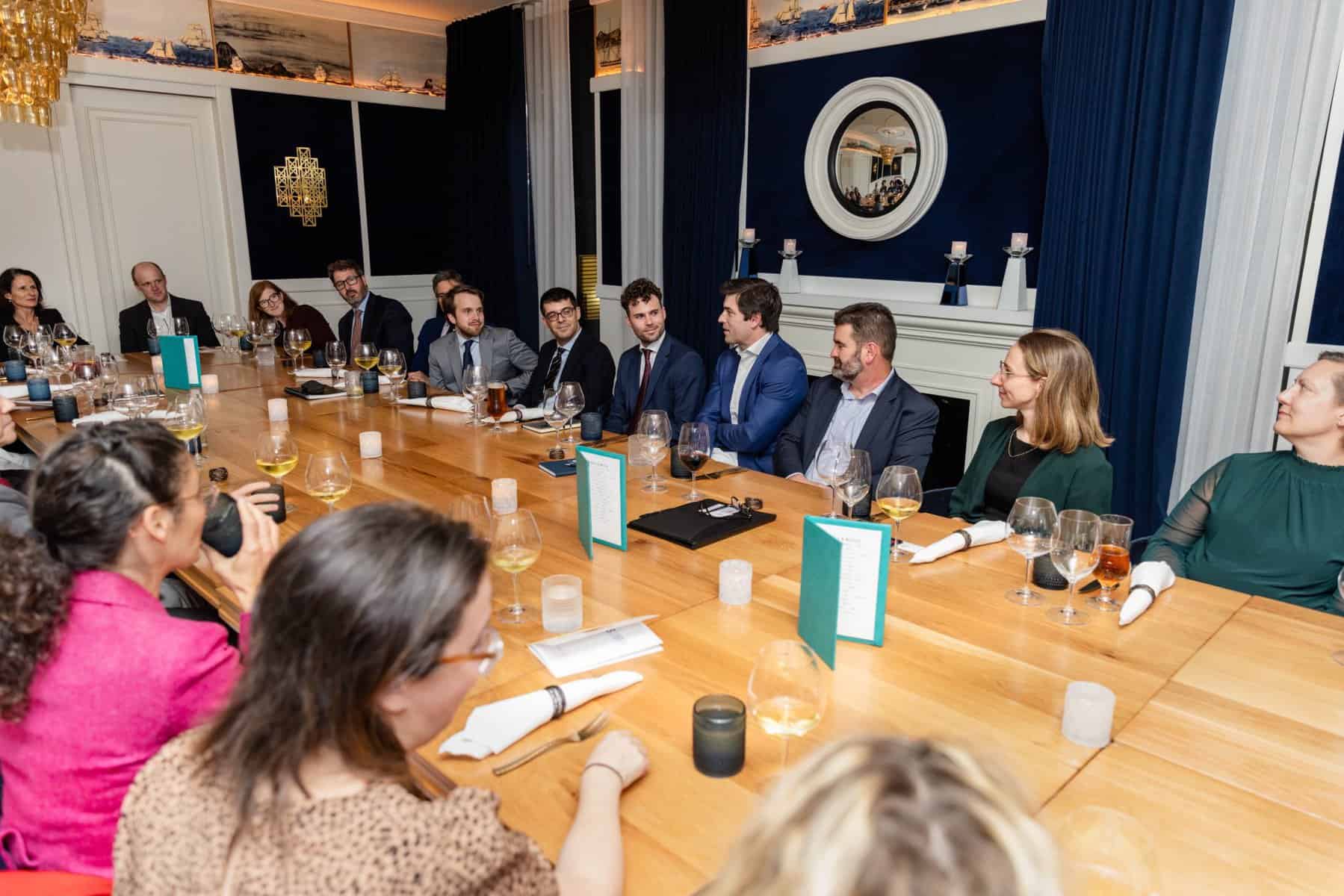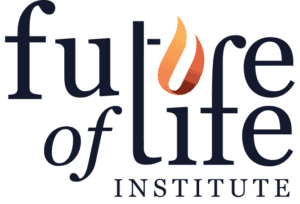Nuclear War Research
Grants archive
Technical Abstract
Climate disruptions following a nuclear conflict would substantially affect food security, putting large parts of mankind at risk of starvation as has been shown by climate-crop modelling studies. Yet, earlier studies did not integrate comprehensive uncertainties in crop models across various intensities of climate perturbations from different levels of atmospheric soot injection, the potentials and limitations of adaptation such as timing of growing seasons or crop choice, and further disruptions in agricultural production such as fertilizer and labor shortages. Herein, we propose a project that will set out to address these research gaps by harnessing the comprehensive crop modelling capacities of the Global Gridded Crop Model Intercomparison (GGCMI) ensemble to simulate secondary climatic impacts of nuclear conflict on global crop production at various levels of stratospheric soot injection for the above adaptation options and extended impacts. This will provide the thus far most comprehensive assessment of potential impacts on crop production and the available option space for adaptation under the working hypotheses that adaptation potential is limited and supply chain disruptions may substantially exacerbate impacts already at lower intensities of soot injection.
Technical Abstract
Recent threats and growing nuclear arsenals are increasing the risk of a nuclear war. Besides the immediate threat of nuclear-weapon explosions, many uncertainties remain about the impact on climate of the subsequent widespread fires as the emitted particles are able to interact with solar radiation. Currently, previous studies have injected only soot over a very short time frame (1 day or one-model time step) and have not included any other particles such as organic or brown carbon that can be over 10 times larger in amount compared to soot during, for example, forest fires.In this study, we will use a set of models of different complexity from a fire-plume model to a fully coupled Earth System Model to investigate the plume composition, its development and climate effects of the smoke generated by fires following a regional nuclear war. Our results will then be shared with other research groups to be used to drive crop and fishery models to estimate the impacts on food availability following a nuclear conflict. Our results will also be compared to previous modeling studies to provide a more robust estimate of the climate consequences associated with a nuclear war.
Project Summary
The potential destruction of the ozone layer by nuclear war poses grave dangers to humanity and ecosystems. In addition to direct effects on surface climate, previous studies of regional scale nuclear exchanges and associated fires have considered how injection of reactive nitrogen and smoke heating could deplete stratospheric ozone. However, studies of urban fires provide evidence for substantial emissions of chlorine, bromine and possibly iodine compounds (for example, from the burning of plastics, flame retardants, home insulation, medical materials, etc.). We propose to evaluate how much these potent ozone-destroying chemicals would add to current estimates of ozone loss following nuclear exchanges. Further, new studies in our group have altered the fundamental understanding of atmospheric chemistry impacts of fire smoke, and are highly likely to increase expected stratospheric ozone losses following nuclear war from these emissions. We have shown that greatly enhanced solubility of hydrochloric acid in oxidized organic smoke particles enhances chlorine-catalyzed ozone destruction. While the Antarctic ozone hole is currently slated to recover by the 2060s, we will probe the extent to which a nuclear exchange could not only bring it back but make it global, i.e., reversing one of humanity's great environmental achievements and driving widespread devastation.
Technical Abstract
We recently quantified how the climate change caused by atmospheric soot loadings from nuclear weapon detonation would limit terrestrial and aquatic food production. We used one climate model, one crop model, and one fishery model to estimate the impacts from six scenarios of stratospheric soot injection, predicting the total food calories available in each nation post-war after stored food was consumed. We estimated that more than 2 billion people could die from nuclear war between India and Pakistan, and more than 5 billion could die from a war between the United States and Russia. We propose to work with other scientific teams to refine and advance our work by using multiple climate and crop models, and addressing changes in the availability of fuel, fertilizer, and agricultural infrastructure, the effects of radioactive contamination, adaptation measures such as planting different crops, and assumptions about food distribution within nations and trade between nations. We will create software for nuclear states to use so they can calculate and avoid civilian deaths depending on how they plan to use nuclear weapons. We will communicate our results with talks, publications, and social media, to inform public policy of the consequences of any use of nuclear weapons.
Technical Abstract
Crop models indicate substantial detrimental impacts on global crop production under nuclear conflict (NC) scenarios. However, crop models have mainly been developed for assessing climate change impacts, focussing on the effects of warming and drought, giving little attention to yield penalties associated with frost damage, excess soil moisture, and flooding. The climate damage mechanisms associated with cooling and excess soil moisture are particularly relevant for evaluating impacts due to NC, but current process-based crop models have limited capacity to represent the associated impacts, leading to overly optimistic impact projections. Here, we propose to improve three well-established global gridded crop models (LPJmL, pDSSAT, CLM-crop) with respect to responses to excess moisture and cold temperatures, based on the expertise from AgMIP’s Global Gridded Crop Model Intercomparison (GGCMI). Flood damage will be accounted for in post-processing based on inundation estimates from an external flood model. These results also help to put into perspective results from a partner project that generates a large ensemble of crop model projections under different NC and management scenarios. Conclusions from this work provide new and corroborated quantitative evidence for the catastrophic indirect but global effects of nuclear conflict.
Technical Abstract
Model studies suggest that intense fires subsequent to the detonation of nuclear warheads would create so-called ‘nuclear-winters’ that could persist for many years leading to global famine. Even regional-scale wars could pose an existential threat to ecosystems and humanity. Here, we utilise a fully-coupled version of the UKESM1 Earth System model to assess the impacts of three different nuclear scenarios i) all-out USA-Russia nuclear war, ii) war between India-Pakistan, iii) more limited nuclear conflicts in eastern Europe. Different numbers of nuclear detonations, vertical profiles, and seasons of conflict are assumed over each area and the climate response is analysed over the subsequent twenty year period. For USA-Russia and India-Pakistan nuclear scenarios, the results are compared to those from significantly less sophisticated and significantly coarser resolution models to examine the fidelity of the earlier results. The new scenarios examine the climatic impacts of the detonation of as few as ten Hiroshima sized nuclear warheads over eastern Europe. Analyses include the physical evolution and longevity of the stratospheric plume and the response in terms of near-surface temperatures, precipitation, stratospheric ozone, induced changes in atmospheric and ocean dynamics, impacts on net primary productivity, ecosystem adaptability and impacts on crop productivity.
Technical Abstract
There are many uncertainties in assessing the consequences of nuclear conflict. Here I propose to work on several outstanding questions, and to communicate the results to society at large. Tasks include:1. I propose to finish a list of military targets in the U.S. and other NATO countries, as well as in Russia and its allies. 2. I propose a modern analysis of the fatalities and casualties from the explosions to gain a better estimate of direct effects. 3. The greatest danger to the global population in a nuclear war is from climate changes due to smoke from fires. I propose to complete a data base of black carbon and smoke emission factors. We will use that data base to determine how much smoke and black carbon will be emitted in a global nuclear war. 4. Using these new targets, and emission factors we will conduct a series of climate modeling studies to determine how military targets compare with urban targets in terms of casualties and impacts on climate. We will also investigate how the components of the smoke other than black carbon contribute to the climate changes assuming the other components are mainly organics.
Technical Abstract
This project will create two new pieces of software, OpenSIOP and TARGETMAP. OpenSIOP is an application designed to make the curation of nuclear war scenarios by researchers easier, quicker, and more transparent. It is an open-source framework for managing datasets of possible nuclear targets, national nuclear arsenals, and target allocations. It will allow expert researchers to easily share and modify target sets, create subsets of targets on the basis of sophisticated targeting philosophies, create force allocations (war scenarios) based on those targets, and export these results to other tools for consequence estimation. It will also be designed to accommodate historical data and methodologies. At every stage, this development will be informed by close communication with other researchers working on the humanitarian impacts of nuclear weapons. TARGETMAP will be built upon the data model developed for OpenSIOP as a public-facing tool for lay audiences to visualize nuclear war scenarios across time and enable them to think concretely about the nature of nuclear war and its impacts. These two tools have the potential to radically improve and enhance academic research into realistic nuclear war scenarios, both in the present and past, as well as facilitate an increased level of engagement with the topic than has ever been possible among lay (and journalist) audiences.
Technical Abstract
Nearly all organic material on Earth is produced by photosynthesizing organisms that play a critical role in food web dynamics, providing the energy needed to sustain consumers at higher trophic levels, including humans. Studies conducted with chemistry-climate models suggest that the firestorms associated with a potential nuclear conflict destroy the protective stratospheric ozone layer, exposing critical photosynthesizers to high levels of UV radiation. Despite the potentially devastating impacts, few studies have investigated the effects of postnuclear UV radiation perturbations on terrestrial and marine photosynthesizers. In this project, we will use a state-of-the-art Earth system model to simulate the response of terrestrial and marine primary production to postnuclear UV radiation. We will modify an existing model to include parameterizations for damage by UV radiation for different types of crops, plants, and marine phytoplankton. We aim to conduct multiple simulations with the modified model to produce a detailed quantification of the sensitivity of photosynthesizers to postnuclear UV radiation and to assess the potential for cascading impacts of nuclear conflict on ecosystem integrity and food security.
Technical Abstract
We propose to develop a framework to simulate urban-scale fires resulting from regional nuclear blasts. It will leverage data on urban morphology and results from simulations performed with a coupled urban-fire-atmosphere model to produce heat and aerosol emissions from burning cities. It will also simulate the evolution of resulting urban pyroconvective smoke plumes, as well as their vertical distribution and final injection level. The effort will leverage the existing fire-atmosphere model WRF-SFIRE-CHEM, which couples a fire spread model and the chemistry version of the Weather Research and Forecasting Model (WRF-Chem) linked with an advanced urbanized version of WRF. Existing wildfire spread and fuel consumption modules will be complemented by the urban fire model, leveraging detailed urban morphological information from the WUDAPT methodology to estimate urban fire heat and emission fluxes. The resulting urban-fire model will allow urban, meteorological, as well as fire processes and interactions, to be resolved in one integrated modeling framework. This will allow us to estimate vertical distributions of emission fluxes, plume rise, and smoke aerosol concentrations, and will allow NW modeling of groups of burning cities anywhere in the world, with simulated detailed characteristics of pyroconvection and emissions from urban fires initiated by nuclear explosions.
The Humanitarian Impacts of Nuclear War
An International Request for Research Proposals
Letters of Intent due November 15, 2022 (11:59PM Eastern Standard Time).
I. Background on FLI
The Future of Life Institute (FLI) is an independent non-profit, established in 2015, that works to steer transformative technology towards benefiting life and away from extreme large-scale risks.
We seek to reduce large-scale harm, catastrophe, and existential risk resulting from accidental or intentional misuse of transformative technologies. FLI presently focuses on issues of advanced artificial intelligence, militarized AI, nuclear war, bio-risk, biodiversity preservation and new pro-social platforms. The present request for proposals is part of the broader grant program described here.
II. Research on the Humanitarian Impacts of Nuclear War
With the risk of nuclear weapons use growing and the recent threats to use nuclear weapons, a deeper evidence-based understanding of the consequences of nuclear war is urgently needed. The current request for proposals targets research on the humanitarian impacts of nuclear weapons use and nuclear war. This focus builds upon the 2022 Future of Life Award. On August 6, 2022, FLI presented John Birks, Paul Crutzen, Jeannie Peterson, Alan Robock, Carl Sagan, Georgiy Stenchikov, Brian Toon and Richard Turco with the Future of Life Award for their roles in discovering nuclear winter and bringing it to the world’s attention. Nuclear winter is the severe and prolonged global climatic cooling that may result from a nuclear war. Nuclear detonations over fuel-dense areas may start violent firestorms, lofting large quantities of soot and smoke into the stratosphere. State-of-the-art climate models suggest it might envelop the planet, blocking out sunlight for years, chilling the planet and devastating global agriculture.
However, even just one nuclear detonation, by accident, miscalculation or design would unleash catastrophic humanitarian impact. Urban areas look very different than in 1945, and rising geopolitical tensions call for more research and knowledge about any type of nuclear weapons use.
The proposed research program can address issues such as:
- Nuclear use scenario development
- Fuel loads and urban fires
- Climate model simulations
- Humanitarian, environmental and societal impacts of nuclear weapons use
- Impact of nuclear testing
- How and to what extent nuclear-weapons-based security and military doctrines, policies, and concepts are informed by scientifically accurate humanitarian impact assessments
III. Evaluation Criteria & Project Eligibility
In this competition, grants totaling at least $3M will be available to researchers in academic and other non-profit institutions for projects of duration up to three years. Grant applications will be subject to a competitive process of external and confidential expert peer review similar to that employed by all major U.S. scientific funding agencies. Renewal funding is possible and contingent on submitting timely reports demonstrating satisfactory progress.
Proposals will be evaluated according to their relevance and impact.
- Relevance: Proposals should relate to the identified priority topics, focusing on understanding the consequences of nuclear weapons use rather than on mitigation. Below is a non-exhaustive list of examples of topics that are deemed relevant:
- Nuclear weapons use scenario development
- Developing range of plausible detailed scenarios
- Modeling what will be targeted in various scenarios
- Radioactive fallout modeling
- Modeling radioactivity from nuclear explosions using regional models
- Modeling radioactivity from reactor spent fuel pools whose cooling systems are crippled by an EMP attack/nuclear war
- Fuel loads and urban fires
- Interactive database of worldwide fuel loads
- Modeling of how urban fires from a nuclear detonation are ignited and how such fires spread in various urban areas.
- Improved modeling of smoke composition, especially for wood burning under hot, oxygen-limited conditions.
- Improved modeling of high-altitude smoke lofting as function of yield, fuel load and meteorology
- Improved modeling of smoke removal via pyrocumulonimbus clouds.
- Earth system model simulations
- Simulations for smoke with organic coatings, which may enhance absorption, but decrease lifetime of smoke.
- Improved optical modeling of how sunlight interacts with smoke coated with organics.
- Improved modeling of washout of radioactive particles from airbursts.
- Improved modeling of effects of UV light and radioactivity on land and ocean biota in Earth System models, and expand range of biota (especially crops and livestock) contained in such models.
- Improve multi-model studies of agricultural and ecosystem responses to changes in climate, atmospheric chemistry (particularly ozone), UV radiation, and radioactivity.
- Human impacts
- Casualty modeling based on detailed warhead targeting scenarios.
- Improved modeling of radiation effects on survivors and ecosystems, including gendered-specific impact on women and girls.
- Psychological impacts on communities impacted by nuclear use and testing.
- Societal impacts
- Modeling of post-use economic, societal and political changes to banking, agriculture, transportation, trade, markets, infrastructure, mass migration, power generation, power distribution, medical support, communication, and global and local politics.
- How evidence of the humanitarian impacts of nuclear weapons informs policy
- Analysis of security and military doctrines, policies, media and academic discourse based on the humanitarian impacts of nuclear weapons.
- Nuclear weapons use scenario development
- Impact: Proposals will be rated according to their expected scientific impact per dollar, taking all relevant factors into account, such as:
- Intrinsic intellectual merit, scientific rigor and originality.
- Potential for significant contribution to basic science relevant to the topic and a high product of likelihood for success and importance if successful.
- The likelihood of the research opening fruitful new lines of scientific inquiry.
- The feasibility of the research in the given time frame.
- The qualifications of the Principal Investigator and team with respect to the proposed topic.
- The part a grant may play in career development.
- Cost-effectiveness: Tight budgeting is encouraged in order to maximize the research impact of the project as a whole, with emphasis on scientific return per dollar rather than per proposal.
- Potential to impact the greater scientific community as well as the general public via effective outreach and dissemination of the research results.
Acceptable uses of grant funds include:
- Student or postdoctoral salary and benefits.
- Summer salary and teaching buyout for academics.
- Support for specific projects during sabbaticals.
- Assistance in writing or publishing books.
- Modest allowance for justifiable lab equipment, computers, publication charges, and other supplies.
- Modest travel allowance.
- Development of large workshops, conferences, or lecture series for professionals.
- Development of outreach or educational programs for laypeople.
Overhead Policy: Overhead of at most 15%. Institutional overhead or indirect costs cannot exceed 15% of the grant’s direct costs. The organization hosting the grant must be prepared to cover any overhead or indirect costs that exceed 15% of direct costs.
IV. Application Process
Applications will be accepted electronically through a standard form at grants.futureoflife.org and evaluated in a two-part process, as follows:
1. LETTERS OF INTENT—DUE November 15, 2022—Must include:
- A project summary not exceeding 500 words, explicitly addressing why it is relevant and impactful.
- A draft budget with description not exceeding 200 words, including an approximate total cost. We envision that typical awards amounts will be in the range $100k-$500k. To encourage tight budgeting, reviewers will rank proposals not by total impact, but by impact per dollar.
- A Curriculum Vitae for each Principal or Co- Investigator including:
- Education and employment history
- A list of up to five previous publications relevant to the proposed research and up to five additional representative publications
- Full publication list
A review panel assembled by FLI will screen each Letter of Intent according to the criteria. Based on the review panel assessment, anticipated to be completed by December 11, 2022, FLI will invite some applicants to submit a full proposal. Please keep in mind that however positive FLI may be about a proposal at any stage, it may still be turned down for funding after full peer review.
2. FULL PROPOSAL—DUE February 19, 2023—Must Include:
- Contact information for the person administering your grant (e.g., your institute’s grant specialist or department head).
- A 200-word project abstract, suitable for publication in an academic journal.
- A project summary not exceeding 200 words, explaining the work and its significance to laypeople.
- A detailed description of the proposed research, including a short statement of how the application fits into the applicant’s present research program, and a description of how the results might be communicated to the wider scientific community and general public. The proposal should be at most 15 single-spaced pages, using 12-point Times Roman font or equivalent, including figures and captions, but not including a reference list, which should be appended, but which has no length limit,
- A detailed budget over the life of the award. The budget must include justification and utilization distribution (drafted by or reviewed by the applicant’s institution’s grant officer or equivalent). Please make sure your budget includes administrative overhead if needed by your institute (15% is the maximum allowable overhead; please see the overhead policy stated above).
- A list, for all project senior personnel, of all present and pending financial support, including project name, funding source, dates, amount, and status (current or pending).
- Evidence of tax-exempt status of grantee institution, if other than a known university. There is a possibility of individual researchers getting funded via an intermediate non-profit organization; please reach out to FLI if you would like more information about this.
- Names and contact information of 3 recommended reviewers.
- Curricula Vitae for all project senior personnel, including:
- Education and employment history
- A list of up to five previous publications relevant to the proposed research, and up to five additional representative publications
- Full publication list
Completed Full Proposals will undergo a competitive process of external and confidential expert peer review, evaluated according to the criteria described above. A review panel of scientists in the relevant fields will be convened to produce a final rank ordering of the proposals, and make budgetary adjustments if necessary. We aim to make public award announcements by June 1, 2023. Funding should be planned to start around September 1, 2023.
V. Funding Process
FLI will direct these grants through a Donor Advised Fund (DAF) at the Silicon Valley Community Foundation. FLI will solicit and review grant applications, and based on these reviews, FLI will send the DAF the funding recommendations. After SVCF has completed its due diligence on the grantee institutes and disbursed funds, FLI will work with SVCF to monitor grantee performance via grant reports. In this way, researchers will continue to interact with FLI, while SVCF mostly interacts with the institutes’ administrative or grants management offices.
Our other grant programs

2024 Grants

Multistakeholder Engagement for Safe and Prosperous AI

